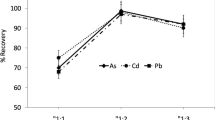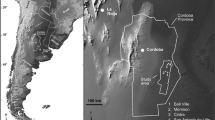Abstract
Fluoride in trace quantity is beneficial for human beings, serving to strengthen the apatite matrix of skeletal tissues and teeth, whereas high intake causes adverse impacts. In the present study, the effect of fluoride-contaminated drinking water of livestock on the milk samples of different cattle, belonging to a fluoride-endemic area (Tharparkar, Pakistan), was studied. In milk samples of different cattle (cows, camels, sheep, and goats), free and bound fluoride forms and its total (free (F−) + bound (F−)) contents were measured by ion-selective electrode. The concentration of fluoride in drinking water of livestock was also analyzed, as found in the range of 11.8–33.5 mg/L. The concentration of total fluoride in the milk samples of sheep, goats, cows, and camels were observed in the range of 1.72–2.43, 1.40–2.03, 0.835–1.41, and 0.425–0.897 mg/L, respectively. The resulted data indicated that the concentration of fluoride was higher in the milk samples of smaller cattle (sheep and goat), as compared to cow and camel. The fluoride in milk samples of all cattle appeared dominantly in free form. The percentage values of bound fluoride in the milk samples of sheep, goats, and cows were found to be 6.76, 11.6, and 19.7% in total, respectively, while in camel milk, the percentage was below the detection limit. The estimated daily intake of fluoride contents on consuming different types of milk by children age ranged 1.0 to 3.0 years was evaluated.

ᅟ
Similar content being viewed by others
References
Bhargava D, Bhardwaj N (2009) Study of fluoride contribution through water and food to human population in fluorosis endemic villages of North-Eastern Rajasthan. African J Basic Appl Sc 1:55–58
Brahman KD, Kazi TG, Afridi HI, Naseem S, Arain SS, Ullah N (2013) Evaluation of high levels of fluoride, arsenic species and other physicochemical parameters in underground water of two sub districts of Tharparkar, Pakistan: a multivariate study. Water Res 47:1005–1020
Brahman KD, Kazi TG, Baig JA, Afridi HI, Khan A, Arain SS, Arain MB (2014a) Fluoride and arsenic exposure through water and grain crops in Nagarparkar, Pakistan. Chemosphere 100:182–189
Brahman KD, Kazi TG, Afridi HI, Rafique T, Baig JA, Arain SS, Ullah N, Panhwar AH, Arain S (2014b) Evaluation of fresh and stored rainwater quality in fluoride and arsenic endemic area of Thar Desert, Pakistan. Environ Monit Assess 186:8611–8628
Casarin R, Fernandes D, Lima-Arsati Y, Cury J (2007) Fluoride concentrations in typical Brazilian foods and in infant foods. Rev Saude Publ 41:1–7
Choubisa SL (2012) Fluoride in drinking water and its toxicosis in tribals, Rajasthan, India. Proc Nat Acad Sci India Sect B Biol Sci 82:325–330
Clesceri LS, Greenberg AE, Eaton AD (1998) Standard methods for the examination of water and wastewater, 20th edn. American Public Health Association, Washington
Dey RK, Swain SK, Mishra S, Sharma P, Patnaik T, Singh VK, Dehury BN, Jha U, Patel RK (2012) Hydrogeochemical processes controlling the high fluoride concentration in groundwater: a case study at the Boden block area, Orissa, India. Environ Monit Assess 184:3279–3291
Dobrzanski Z, Kołacz R, Gorecka H, Chojnacka K, Bartkowiak A (2005) The content of microelements and trace elements in raw milk from cows in the Silesian region. Polish J Environ Studies 14:685–689
EFSA (2005) Opinion of the scientific panel on dietetic products, nutrition and allergies on a request from the commission related to the tolerable upper intake level of fluoride. EFSA J 192:1–65
Erdal S, Buchanan SN (2005) A quantitative look at fluorosis, fluoride exposure, and intake in children using a health risk assessment approach. Environ Health Perspect 113:111–117
Grimaldo M, Borja V, Ramirez AL et al (1995) Endemic fluorosis in San Luis Potosi, Mexico. Identification of risk factors associated with human exposure to fluoride. Environ Res 68:25–30
Gupta P, Gupta NN, Meena K, Moon NJ, Kumar P, Kaur R (2015) Concentration of fluoride in cow’s and buffalo’s milk in relation to varying levels of fluoride concentration in drinking water of Mathura City in India—a pilot study. J Clin Diagnos Res 9:LC05–LC07
Jha SK, Nayak AK, Sharma YK (2010) Potential fluoride contamination in the drinking water of marks Nagar, Unnao district, Uttar Pradesh, India. Environ Geochem Health 32:217–226
Karthikeyan G, Anitha P, Apparao BV (1996) Contribution of fluoride in water and food to the prevalence of fluorosis in areas of Tamil Nadu in South India. Fluoride 29(3):151–155
Karthikeyan G, Anitha P, Viswanathan G (2005) Effect of certain macro and micro minerals on fluoride toxicity. Indian J Environ Protect 25(7):601–609
Kaseva ME (2006) Contribution of trona (madadi) into excessive fluorosis—a case studies in Maji ya Chai ward, northern Tanzania. Sci of the Total Environ 366(1):92–100
Matlock M, Thoma G, Cummings E, Cothren J, Leh M, Wilson J (2013) Geospatial analysis of potential water use, water stress, and eutrophication impacts from US dairy production. Internat Dairy J 31:S78–S90
Levy SM, Kohout FJ, Guha-Chowdhury N, Kiritsy MC, Heilman JR, Wefel JS (1995) Infants’ fluoride intake from drinking water alone, and from water added to formula, beverages, and food. J Dent Res 74:1399–1407
Liu C, Wyborny L, Chan J (1995) Fluorıde content of daıry mılk from supermarket-a possıble contrıbutıng factor to dental fluorosıs. Fluoride 28:10–16
Nicolay A, Bertocchio P, Bargas E, Coudore F, Al Chahin G, Reynier JP (1999) Hyperkalemia risks in hemodialysed patients consuming fluoride-rich water. Clin Chim Acta 281:29–36
Pang DTY, Phillips CL, Bawden JW (1992) Fluoride intake from beverage consumption in a sample of North Carolina children. J Dent Res 71:1382–1388
Pasternak K, Majdanik S, Papierkowski A (1998) Fluorine in milk. Polish J Environ Studies 7:243–244
Queste ALM, Hellmeier WHF, Bortulussi BKM, Otto KMW (2001) High concentrations of fluoride and boron in drinking water wells in the Muenster region—results of a preliminary investigation. Int J Hyg Environ Health 203:221–224
Rafique T, Naseem S, Bhanger MI, Usmani TH (2008) Fluoride ion contamination in the groundwater of Mithi sub-district, the Thar Desert, Pakistan. Environ Geol 56:317–326
Rafique T, Naseem S, Usmani TH, Bashir E, Khan FA, Bhanger MI (2009) Geochemical factors controlling the occurrence of high fluoride groundwater in the Nagar Parkar area, Sindh, Pakistan. J Hazard Mater 171:424–430
Saxena VK, Ahmed S (2001) Dissolution of fluoride in groundwater: a water–rock interaction study. Environ Geol 40:1084–1087
Tomori T, Koga H, Maki BY, Takaesu Y (2004) Fluoride analysis of foods for infants and estimation of daily fluoride intake. Bull Tokyo dent Coll 45(1):19–32
Tóth ZS, Gintner Z, Bánóczy J (2005) The effect of ingested fluoride administered in salt, milk, and tablets on salivary and urinary fluoride concentrations. Fluoride 38:199–204
Whitford GM, Sampaio FC, Pinto CS, Maria AG, Cardoso V, Buzalaf M (2008) Pharmacokinetics of ingested fluoride: lack of effect of chemical compound. Arch Oral Biol 53:1037–1041
Xiang Q, Liang Y, Chen L, Wang C, Chen B, Chen X, Zhou M (2003) Effect of fluoride in drinking water on children’s intelligence. Fluoride 36:84–94
Funding
The authors are grateful for the financial support of the Higher Education Commission (HEC), Islamabad (Pin no. 112-26591-2Ps1-182).
Author information
Authors and Affiliations
Corresponding author
Additional information
Responsible editor: Philippe Garrigues
Rights and permissions
About this article
Cite this article
Kazi, T.G., Brahman, K.D., Afridi, H.I. et al. Effects of high fluoride content in livestock drinking water on milk samples of different cattle in endemic area of Pakistan: risk assessment for children. Environ Sci Pollut Res 25, 12909–12914 (2018). https://doi.org/10.1007/s11356-018-1563-8
Received:
Accepted:
Published:
Issue Date:
DOI: https://doi.org/10.1007/s11356-018-1563-8




